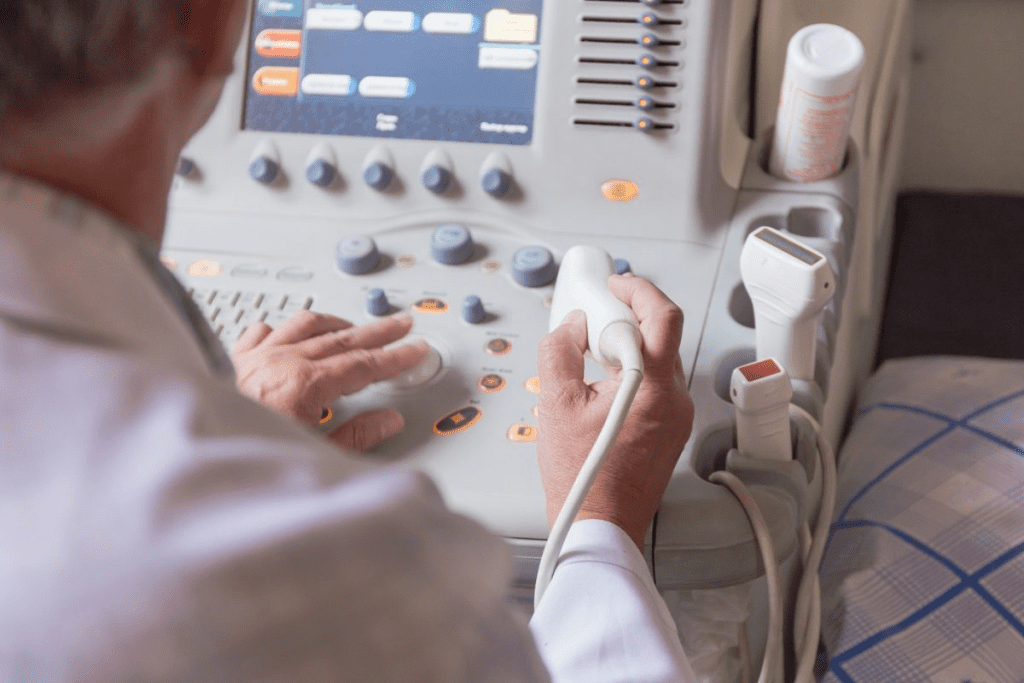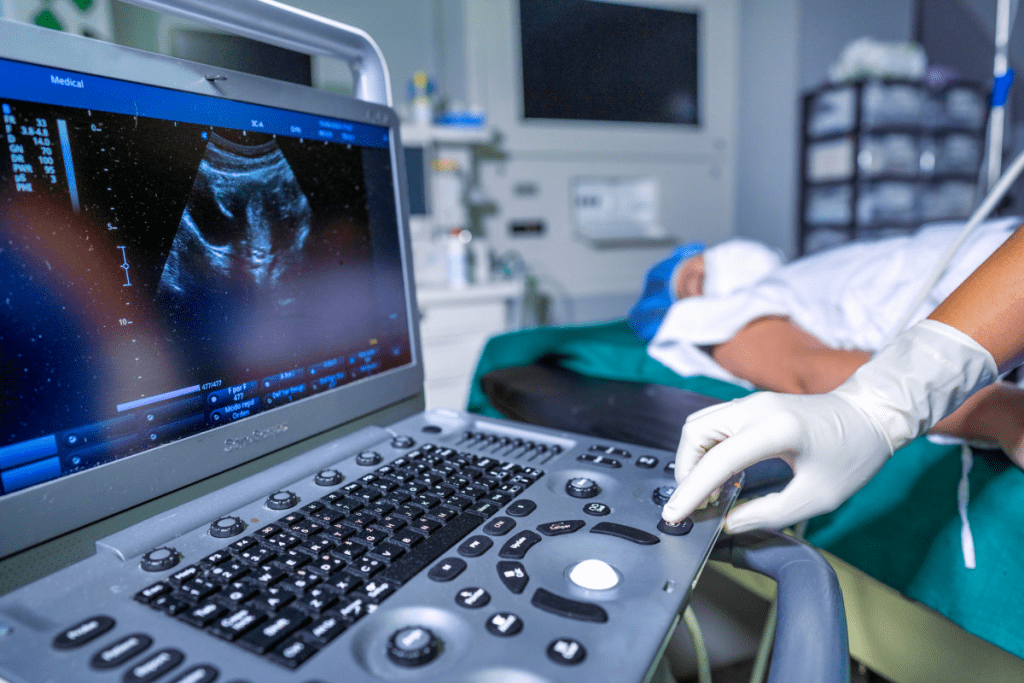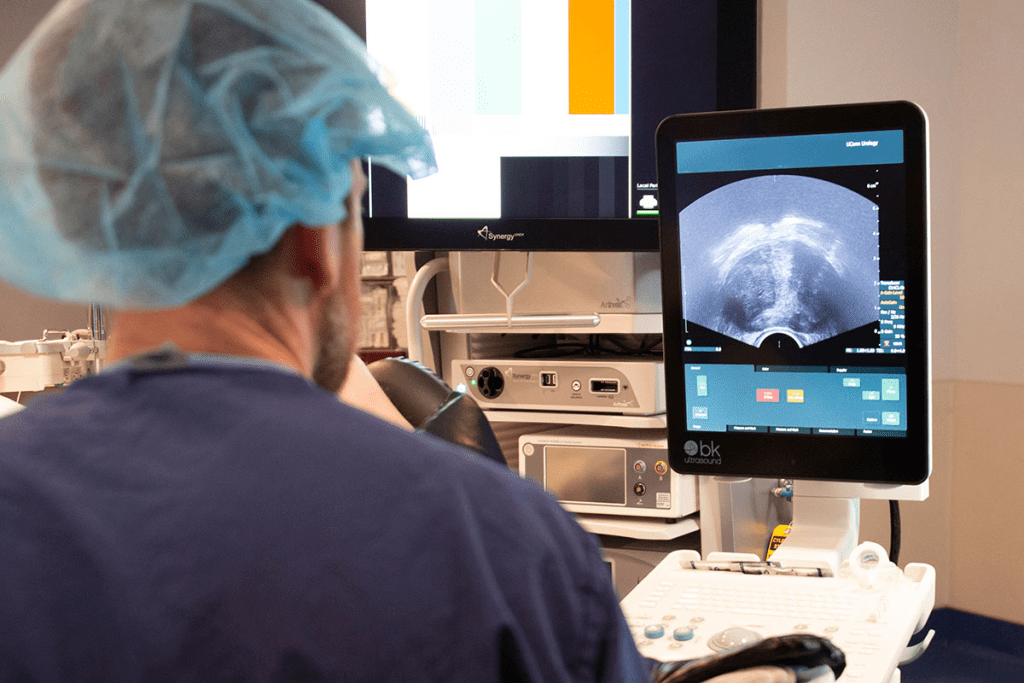Last Updated on November 25, 2025 by
Before a bladder ultrasound, doctors tell patients to drink lots of water. This makes sure the bladder is full. But what if you don’t drink enough?

Drinking enough water is key for a good bladder ultrasound. Studies show that 300“400 mL of water is best for a full bladder. If the bladder isn’t full, the ultrasound might not work well. This could mean bad results or having to do it again.What happens if you dont drink the water before a scan? Learn the negative impact of an empty bladder on a powerful ultrasound diagnosis.
Understanding the need for a full bladder before an ultrasound is key. A full bladder greatly improves the quality of ultrasound images.
A full bladder offers a better path for sound waves. This enhances the view of the bladder and nearby organs.
A full bladder works like a contrast agent, helping ultrasound waves to pass through easily. Drinking water before the test fills the bladder. This pushes the intestines aside, giving a clearer view for the sound waves. This leads to more accurate images for doctors to diagnose dont drink the water.

Medical experts say a full bladder is essential for clear ultrasound images. A related article on what happens if you don’t drink enough water before an ultrasound highlights the importance of being well-hydrated.
The science behind ultrasound images is tied to how fluid affects sound waves. A full bladder increases contrast between tissues, making it easier to see different structures. This is vital for diagnosing bladder and pelvic area issues.
Knowing how bladder filling helps in ultrasound imaging shows why proper preparation is important. Drinking enough water before an ultrasound is not just for comfort. It’s essential for getting the best possible images.
Not drinking enough water before a bladder ultrasound can cause big problems. It’s important to drink water before an ultrasound. If you don’t, you might face several issues.
Not drinking enough water can make ultrasound images poor quality. A full bladder is key for clear images. It pushes intestines away and gives a better view.dont drink the water Without enough water, the bladder might not fill up right, making images bad and affecting diagnosis.
“Adequate bladder filling is critical for high-quality ultrasound images.” This is very important. It helps doctors make accurate diagnoses.
Not being hydrated can mean you might have to reschedule or wait longer. If images are not good enough, you might need to do the ultrasound again. This can be a hassle for everyone, causing delays in getting your diagnosis and treatment dont drink the water.
Drinking enough water is also key for seeing other pelvic structures clearly. A full bladder gives a better view of the pelvic organs. Without enough water, seeing these structures well might be hard, leading to missed diagnoses or more tests.
Lastly, not drinking enough water can make you wait longer at the hospital.dont drink the water If images are not good, you might have to wait and drink more water. This can make your wait longer and your experience more stressful.
In short, drinking water before an ultrasound is very important. It helps make sure the procedure goes well. dont drink the waterBy knowing the problems of not drinking enough, patients can prepare better. This helps ensure they get the right diagnosis quickly.
Drinking the right amount of water is key for a good bladder ultrasound. We suggest certain steps to fill the bladder well. This is vital for clear images and accurate results.
Research says drinking 300“400 mL of water 30-60 minutes before works best. This amount fills the bladder enough without causing pain or urgency. Drinking the right amount of water is key to ensuring that the ultrasound images are clear and useful for diagnostic purposes.
Remember, everyone’s hydration needs are different. Age, size, and health can affect how much water you need. Our guidelines are designed to be flexible and accommodate different patient needs while ensuring the best possible outcomes.
When you drink water matters as much as how much. We tell patients to drink 30-60 minutes before the ultrasound. This lets the bladder fill just right, without being too full.
By following these tips, patients can help make their ultrasound a success. Proper hydration is a simple yet critical step in the ultrasound process.
When getting ready for a bladder ultrasound, some groups need extra care. Each group has its own health issues or challenges. These can affect how well the ultrasound works.
Elderly people might have trouble staying hydrated. This is because they might not feel thirsty as much, or they could have health problems. It’s very important for them to drink enough water before the ultrasound. Caregivers can help them with this.
Some elderly folks might have trouble keeping water in their bladder. Being flexible with the schedule and giving them more time to drink can help.
People who go to the bathroom a lot or have incontinence might struggle to keep their bladder full. We recommend a timed voiding schedule to help. Also, using protective gear can help manage leaks during the test.
For those with very bad incontinence, try to schedule the ultrasound when the bladder is full. This is usually right after drinking a lot of water.
Children and teens need special care during bladder ultrasounds. They might not understand the test or stay calm. It’s key to explain things clearly and reassure them.
For the youngest kids, getting parents or guardians involved is a good idea. They can explain the test and make sure the child drinks water as needed.

Healthcare providers can make bladder ultrasounds better for everyone by knowing and meeting the needs of each group. Good preparation and care can make the ultrasound images better and improve the patient’s experience.
Drinking enough water before a bladder ultrasound is key for good results. Not drinking enough can make images poor, increase the need for rescheduling, and make it hard to see the pelvic area.
We’ve talked about why staying hydrated is important for bladder ultrasounds. This includes following water intake advice and timing it right for the best results.
By following these tips, patients can have a successful ultrasound. Drinking enough water is essential for clear images. We urge patients to drink plenty of water before their ultrasound to get the best results.
Drink 32 ounces (about 1 liter) of water 1-2 hours before the ultrasound. This helps ensure your bladder is full. But, the exact amount needed can change based on your age and health.
For a bladder ultrasound, drinking water is usually recommended. But, for an abdominal ultrasound, your doctor might give different instructions. Always follow what your healthcare provider says.
Not drinking enough water can make the ultrasound images poor quality. It might also cause delays or rescheduling. You could also have trouble seeing other pelvic structures and wait longer at the facility.
To prepare, drink the recommended water and follow any extra steps your doctor tells you. This might include arriving early or making sure your bladder is full.
Yes, people with urinary issues can have a bladder ultrasound. They might need to drink water slowly or take breaks to use the restroom. This helps ensure the procedure goes well.
Yes, kids and teens might need special care for their ultrasound. This could include adjusting how much water they drink or getting extra support. Always follow your doctor’s advice.
Drink the recommended water 1-2 hours before your ultrasound. Then, try not to use the restroom until the procedure is over. This helps get the best images.
Filling the bladder helps get clearer images. It gives a better view of the pelvic area. This makes the ultrasound more accurate and helpful.
Subscribe to our e-newsletter to stay informed about the latest innovations in the world of health and exclusive offers!